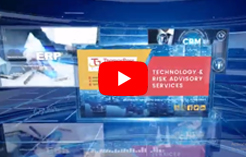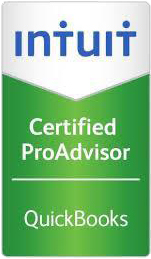
Your single Source solution
Your single Source solution

What is Tax Planning?
Tax planning is a year-round process (as opposed to a seasonal event) and is a separate service from tax preparation. Both individuals and business owners can take advantage of tax planning services, which are typically performed by a CPA and accounting firm or an Enrolled Agent (EA) with in-depth experience and knowledge of tax law, rather than a tax preparer.
Examples of tax planning include the following: Bunching expenses (e.g., medical) to maximize deductions, tax-loss harvesting to offset investment gains, increasing retirement plan contributions to defer income, and determining the best timing for capital expenditures to reap the tax benefits. Good recordkeeping is also an important part of tax planning and makes it easier to pay quarterly estimated taxes, for example, or prepare tax returns the following year.
Tax planning is something that most taxpayers do not take advantage of - but should - because it can help minimize their tax liability on next year's tax return by planning ahead. While it may mean spending more time with an accountant, say quarterly - or even monthly - the tax benefit is usually worth it. By reviewing past returns, an accountant will have a more clear picture of what you can do this year to save money on next year's tax return.
If you are ready to learn more about what strategies you can use to reduce your tax bill next year, please call the office.
Tax Strategies
End-of-Year Tax Planning Strategies for Businesses
Several end-of-year tax planning strategies are available to business owners that can be used to reduce their tax liability. Let's take a look:
Deferring Income
Businesses using the cash method of accounting can defer income into 2021 by delaying end-of-year invoices so that payment is not received until 2021. Businesses using the accrual method can defer income by postponing the delivery of goods or services until January 2021.
Purchase New Business Equipment
Bonus Depreciation. Businesses are allowed to immediately deduct 100% of the cost of eligible property placed in service after September 27, 2017, and before January 1, 2023, after which it will be phased downward over a four-year period: 80% in 2023, 60% in 2024, 40% in 2025, and 20% in 2026.
Section 179 Expensing. Businesses should take advantage of Section 179 expensing this year whenever possible. In 2020, businesses can elect to expense (deduct immediately) the entire cost of most new equipment up to a maximum of $1.04 million of the first $2.59 million of property placed in service by December 31, 2020. Keep in mind that the Section 179 deduction cannot exceed net taxable business income. The deduction is phased out dollar for dollar on amounts exceeding the $2.59 million threshold and eliminated above amounts exceeding $3.63 million.
Computer or peripheral equipment placed in service after December 31, 2017, are not included in listed property.
For property placed in service in taxable years beginning after December 31, 2017, taxpayers can elect to include certain improvements made to nonresidential real property after the date when the property was first placed in service.
1. Qualified improvement property, which means any improvement to a building's interior. However, improvements do not qualify if they are attributable to:
⦁ the enlargement of the building,
⦁ any elevator or escalator or
⦁ the internal structural framework of the building.
2. Roofs, HVAC, fire protection systems, alarm systems, and security systems.
Qualified Property.
Qualified property is defined as property that you placed in service during the tax year and used predominantly (more than 50 percent) in your trade or business. Property that is placed in service and then disposed of in that same tax year does not qualify, nor does property converted to personal use in the same tax year it is acquired.
Real estate qualified improvement property is eligible for immediate expensing, thanks to the CARES Act, which corrected an error in the Tax Cuts and Jobs Act. Taxpayers are also able to amend 2018 tax returns, if necessary.
Please contact the office if you have any questions regarding qualified property.
Timing for purchase of business equipment. You might be able to increase your tax benefit if you buy equipment at the right time. Here's a simplified explanation:
Conventions. The tax rules for depreciation include "conventions" or rules for figuring out how many months of depreciation you can claim. There are three types of conventions. To select the correct convention, you must know the type of property and when you placed the property in service.
⦁ The half-year convention: This convention applies to all property except residential rental property, nonresidential real property, and railroad gradings and tunnel bores (see mid-month convention below) unless the mid-quarter convention applies. All property that you begin using during the year is treated as "placed in service" (or "disposed of") at the midpoint of the year. This means that no matter when you begin using (or dispose of) the property, you treat it as if you began using it in the middle of the year.
You buy a $70,000 piece of machinery on December 15. If the half-year convention applies, you get one-half year of depreciation on that machine.
⦁ The mid-quarter convention: Use the mid-quarter convention if the cost of equipment placed in service during the last three months of the tax year is more than 40 percent of the total cost of all property placed in service for the entire year. If the mid-quarter convention applies, the half-year rule does not apply, and you treat all equipment placed in service during the year as if it were placed in service at the midpoint of the quarter in which you began using it.
⦁ The mid-month convention: This convention applies only to residential rental property, nonresidential real property, and railroad gradings and tunnel bores. It treats all property placed in service (or disposed of) during any month as placed in service (or disposed of) on the midpoint of that month.
If you're planning on buying equipment for your business, please call and speak with a tax professional who can help you figure out the best time to buy that equipment and take full advantage of these tax rules.
Other Year-End Moves to Take Advantage Of
Qualified Business Income Deduction. Many business taxpayers - including owners of businesses operated through sole proprietorships, partnerships, and S corporations, as well as trusts and estates, may be eligible for the qualified business income. This deduction is worth up to 20 percent of qualified business income (QBI) from a qualified trade or business for tax years 2018 through 2025. Your taxable income must be under $163,300 ($326,600 for joint returns)in 2020 to take advantage of the deduction.
The QBI is complex, and tax planning strategies can directly affect the amount of deduction, i.e., increase or reduce the dollar amount. As such, it is especially important to speak with a tax professional before year's end to determine the best way to maximize the deduction.
Small Business Health Care Tax Credit. Small business employers with 25 or fewer full-time-equivalent employees with average annual wages of $50,000 indexed for inflation (e.g., $55,000 in 2019) may qualify for a tax credit to help pay for employees' health insurance. The credit is 50 percent (35 percent for non-profits).
Business Energy Investment Tax Credits. Business energy investment tax credits are still available for eligible systems placed in service on or before December 31, 2022, and businesses that want to take advantage of these tax credits can still do so.
Business energy credits include geothermal electric, large wind (expires at the end of 2020), and solar energy systems used to generate electricity, to heat, cool, or to provide hot water for use in a structure, or to provide solar process heat.
Hybrid solar lighting systems, which use solar energy to illuminate the inside of a structure using fiber-optic distributed sunlight, are eligible; excluded, however, are passive solar and solar pool heating systems. Utilities are allowed to use the credits as well.
Repair Regulations. Where possible, end of year repairs and expenses should be deducted immediately, rather than capitalized and depreciated. Small businesses lacking applicable financial statements (AFS) can take advantage of de minimis safe harbor by electing to deduct smaller purchases ($2,500 or less per purchase or invoice). Businesses with applicable financial statements can deduct $5,000. Small businesses with gross receipts of $10 million or less can also take advantage of safe harbor for repairs, maintenance, and improvements to eligible buildings. Please call if you would like more information on this topic.
Depreciation Limitations on Luxury, Passenger Automobiles, and Heavy Vehicles. As a reminder, tax reform changed depreciation limits for luxury passenger vehicles placed in service after December 31, 2017. If the taxpayer doesn't claim bonus depreciation, the maximum allowable depreciation deduction for 2020 is $10,100 for the first year.
Deductions are based on a percentage of business use. A business owner whose business use of the vehicle is 100 percent can take a larger deduction than one whose business use of a car is only 50 percent.
For passenger autos eligible for the additional bonus first-year depreciation, the maximum first-year depreciation allowance remains at $8,000. It applies to new and used ("new to you") vehicles acquired and placed in service after September 27, 2017, and remains in effect for tax years through December 31, 2022. When combined with the increased depreciation allowance above, the deduction amounts to as much as $18,100 in 2020.
Heavy vehicles including pickup trucks, vans, and SUVs whose gross vehicle weight rating (GVWR) is more than 6,000 pounds are treated as transportation equipment instead of passenger vehicles. As such, heavy vehicles (new or used) placed into service after September 27, 2017, and before January 1, 2023, qualify for a 100 percent first-year bonus depreciation deduction as well.
Retirement Plans. Self-employed individuals who have not yet done so should set up self-employed retirement plans before the end of 2020. Call today if you need help setting up a retirement plan.
Dividend Planning. Reduce accumulated corporate profits and earnings by issuing corporate dividends to shareholders.
Paid Family and Medical Leave Credit. Last chance to take advantage of the employer credit for paid family and medical leave, which expires at the end of 2020.
Year-end Tax Planning Could Make a Difference in Your Tax Bill
If you'd like more information, please call to schedule a consultation to discuss your specific tax and financial needs and develop a plan that works for your business.

The support you deserve
We provide excellent support through professionalism, responsiveness and quality.
Read More
Security You can trust
Your data is safe with us. Our Client Portal protects you with 14 full layers of security.
Read More
Service you rely on
We offer a broad range of services to help clients secure a sound financial future.
Read MoreBusiness Transformation and Strategy
CAPITAL MARKET
FINANCIAL CHARTS
Get real-time information and market insights
Develop A Cloud Technology Strategy that Powers Your Bottom Line
With our full range of industry leading products, we can assess complex situations, and provide the best technology tools to address your future growth.
Learn More



